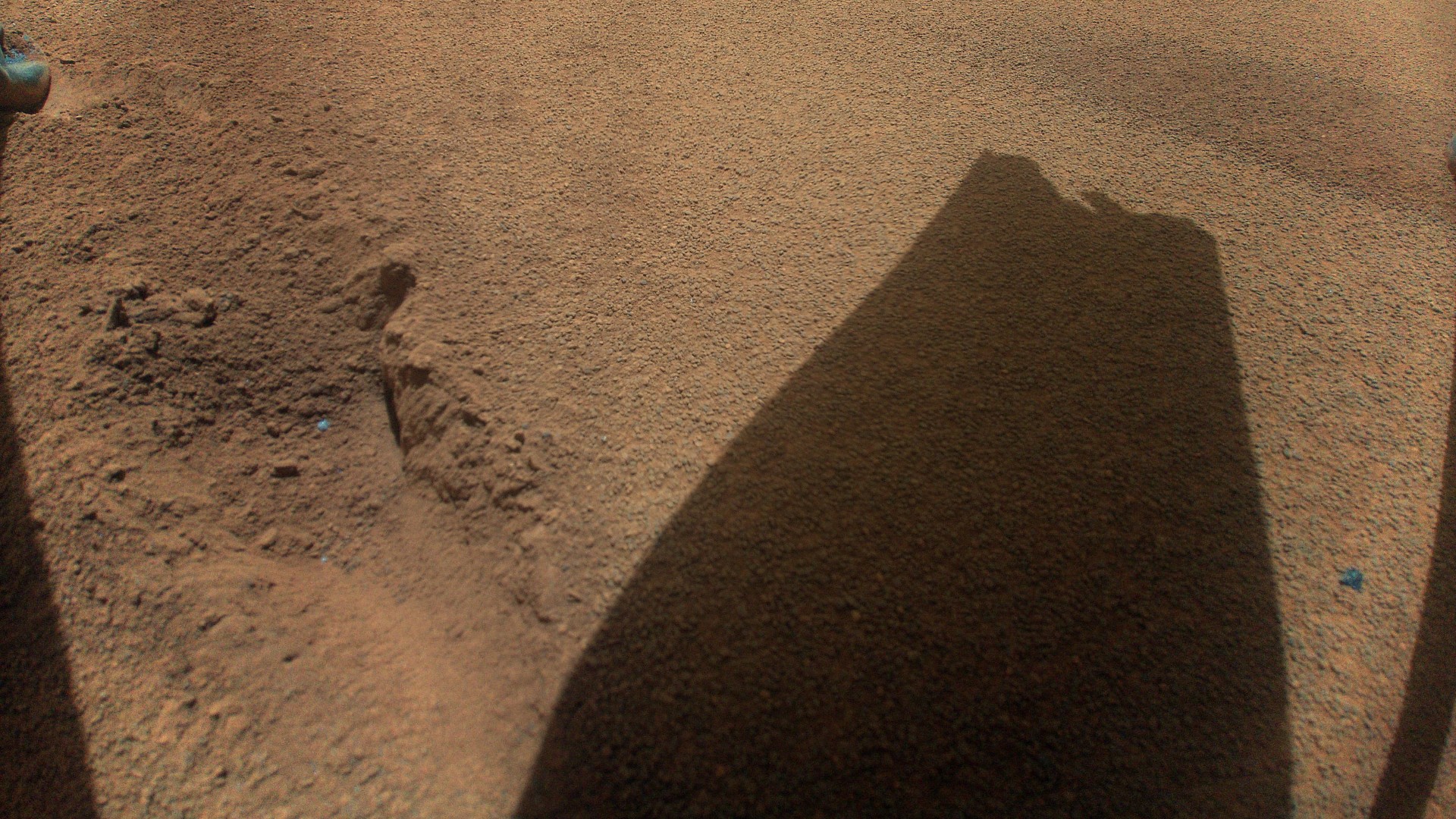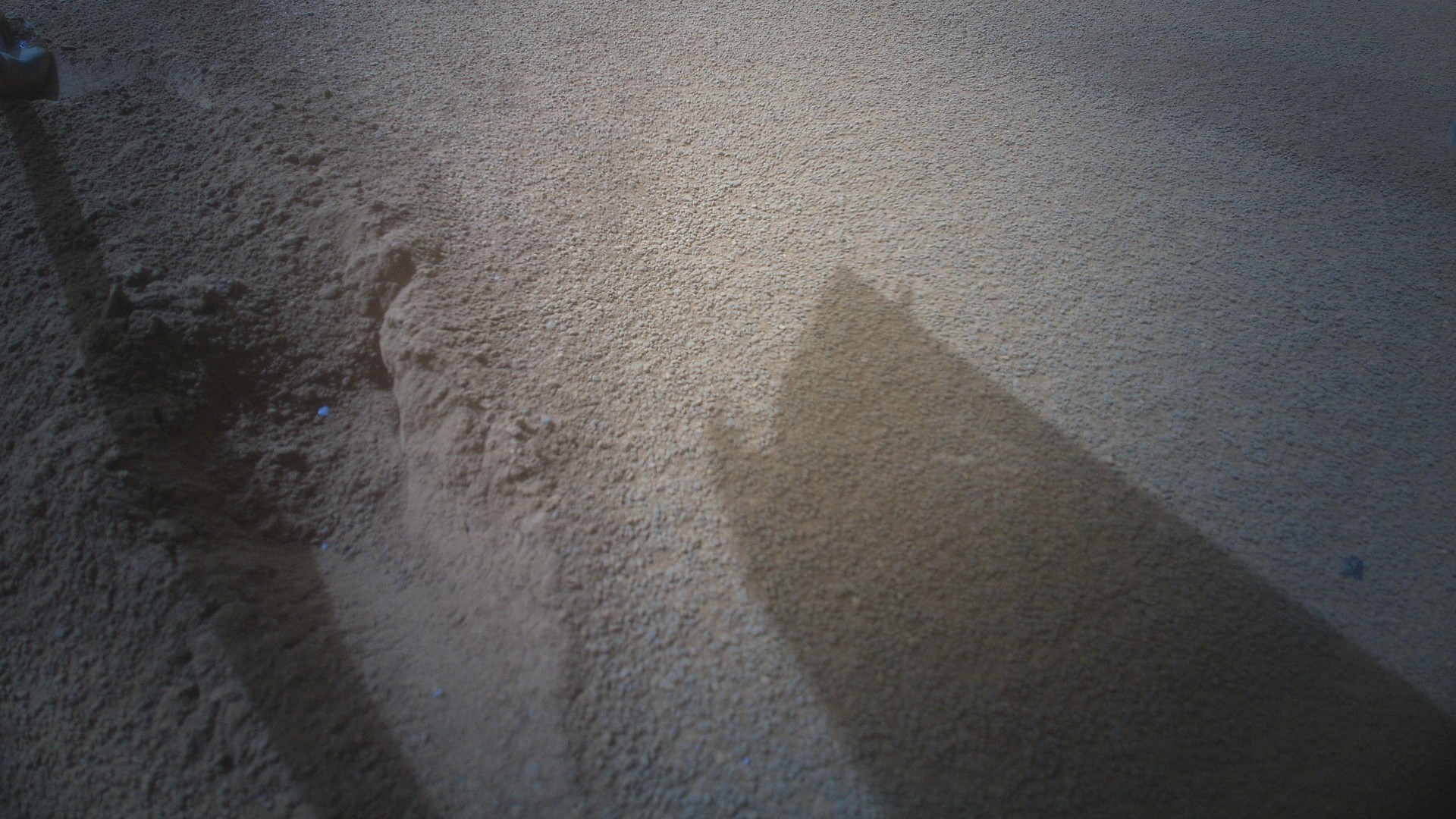
New images from NASA's Ingenuity Mars helicopter reveal how badly the craft's rotor blades were damaged following its final, mission-ending flight on Jan. 18.
The images, taken with Ingenuity's high-resolution navigation camera and shared by NASA's Jet Propulsion Laboratory on Jan. 25, show the shadows of Ingenuity's spinning rotor blades being cast on the dusty Martian terrain below. The photos reveal sharp breaks at the tips of at least two of Ingenuity's four carbon fiber blades, with chunks of the material clearly missing.
Some of the images also show what appears to be small, broken pieces of rotor lying on the ground nearby. (Look for a small bluish chunk to the right of the rotor's shadow in the image above).
Ingenuity — a roughly 4-pound (1.8 kilograms) robotic helicopter first deployed to Mars in 2021 — sustained fatal rotor damage at the end of its 72nd flight over the Red Planet, when it unexpectedly lost contact with NASA at an altitude of roughly 3 feet (1 m). While NASA quickly re-established contact with the copter after it made a hard emergency landing, it soon became clear that Ingenuity would never be able to fly again.
Related: NASA's Curiosity rover snaps iconic 'Star Trek' symbol on Mars, thrilling scientists

Sadly, scientists will never know exactly what happened during those final moments due to a data loss at the moment of the helicopter's landing, Ingenuity project manager Teddy Tzanetos said in a NASA live stream on Jan. 31.
"Our theory here is ground contact," Tzanetos said. "At some point we had contact with our rotor blades with the surface."
This sudden damage marks a bittersweet end to Ingenuity's long-extended mission on Mars. First deployed with the Perseverance rover in February 2021, Ingenuity was designed to test NASA's technology in a series of five flights. The helicopter quickly zoomed through its initial objectives, ultimately clocking nearly 128 minutes of flight time on Mars during 72 flights completed over three years.
In its latter years, the helicopter served as a scout for the Perseverance rover, which continues to scour the Red Planet in search of geological clues of past life on Mars. The rover serves as a communications relay between NASA and Ingenuity; when Perseverance eventually drives out of range of Ingenuity, NASA will no longer be able to communicate with the downed helicopter, Tzanetos said.
Ingenuity remains the first and only powered aircraft to fly on another planet. However, NASA said, it almost certainly will not be the last. Follow-up missions, including the planned deployment of two similar helicopters, are already in the works.







